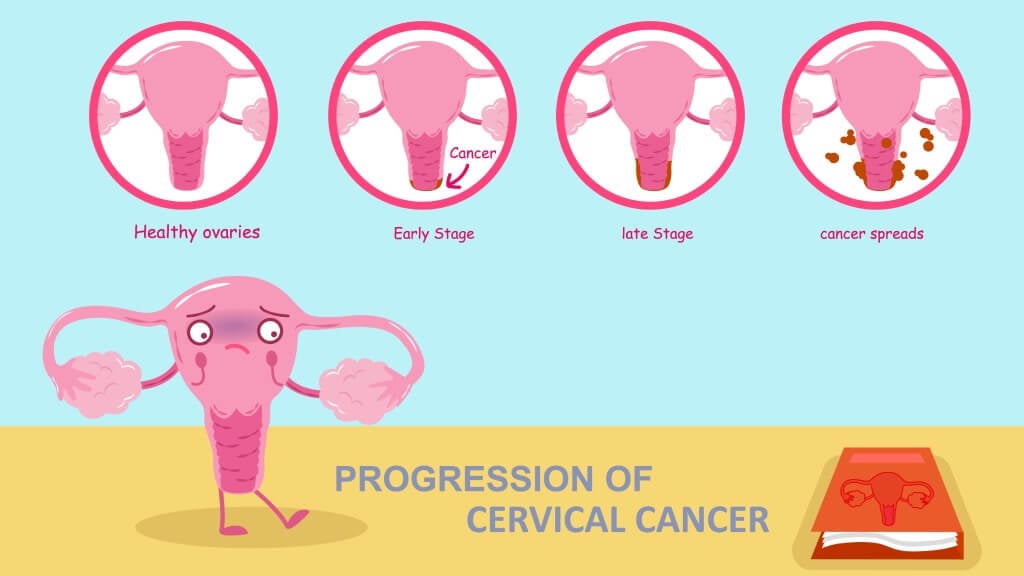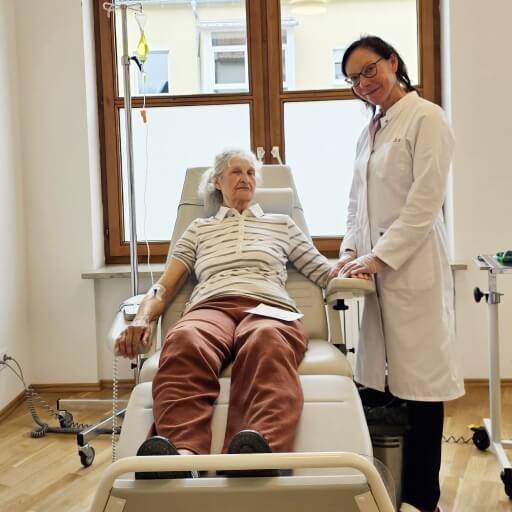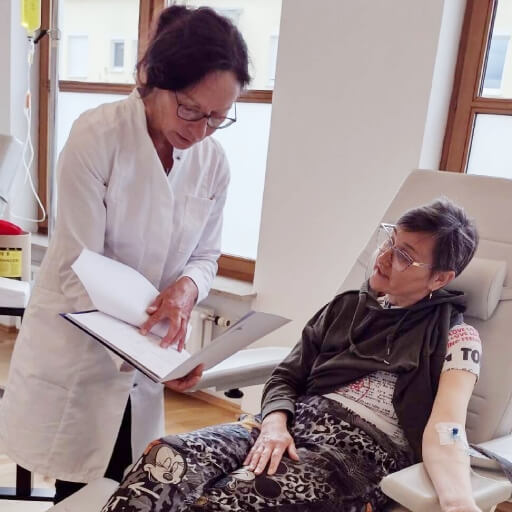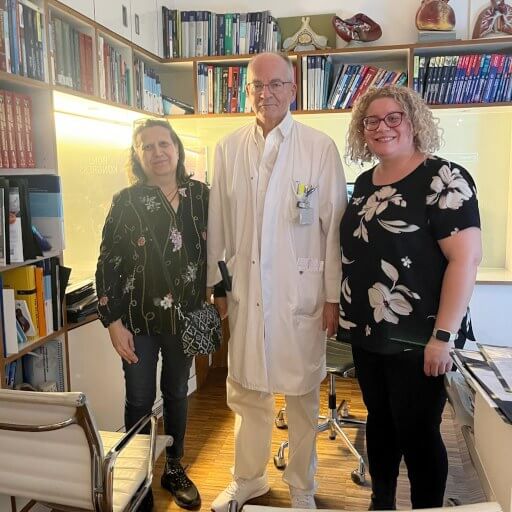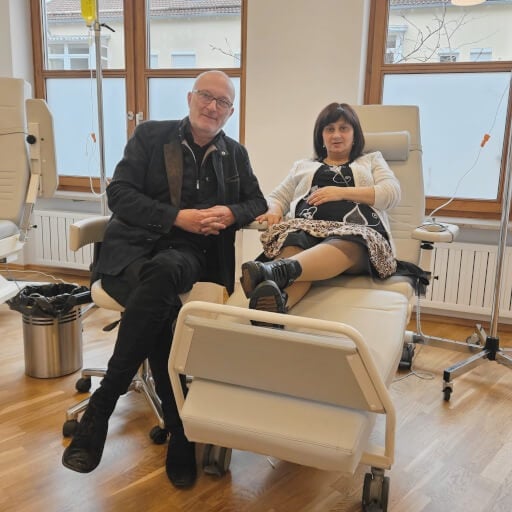Cervical cancer is a serious disease that kills thousands of young women every year. Cervical cancer is usually detected late and difficult to treat from stage 2 onwards. However, there are effective treatments to defeat it. Treatments for cervical cancer include surgery, radiation therapy, and chemotherapy.
Is Cervical Cancer treatable?
Cervical cancer is treated at any stage of the oncological process. However, the goals of treatment can vary.
They are defined by:
- Stage
- Therapies available (financial capacity of the patient, technical and human resources of the medical institution)
- Patient's age, physical condition
- Fertility needs to be maintained
The goals of therapy can be as follows:
- Full recovery. Cervical cancer can be cured no later than stage 2. Radical treatment ensures high recurrence-free survival.
- Increased life expectancy. Combined treatment is used. There is a high likelihood of relapse. However, the patient's life expectancy increases by several years, which makes the therapeutic effect justified.
Improving the quality of life. If life expectancy cannot be increased, palliative treatment methods are used to eliminate or reduce the main symptoms of the oncological process, usually those caused by mechanical pressure of the tumor on the surrounding tissue.
How is Cervical Cancer treated?
Treatment for cervical cancer includes three main groups of methods:
- Surgery
- Irradiation
- Chemotherapy
Treatment for cervical cancer combines these methods. Treatment depends on how far the cancer has spread.
The stage is determined by:
- By the depth of the cancer invasion (how much the tumor has grown and how much it has spread to the surrounding tissues)
- By the presence of near and distant metastases
The location of the tumor and its histological type (squamous cell carcinoma or adenocarcinoma) also affect the treatment of cervical cancer.
Can cervical cancer be cured in the early stages?
Many women who were cured of cervical cancer several years ago are alive and well today. Radical treatment allows you to completely get rid of the disease. If the tumor is removed before it metastases, there will be no recurrence.
However, everyone who has completely recovered from cervical cancer:
- Were treated at an early stage
- Used radical treatments for cervical cancer
Radical methods include surgical removal of the tumor, less often (at stage 0) - the destruction of pathologically altered tissues using minimally invasive physical procedures.
How to treat cervical cancer at different stages?
Different stages require different approaches to cervical cancer treatment. The less cancer spreads, the lower the risk of recurrence. Survival also depends on the radical nature of the operation. The preferred surgical method is hysterectomy - removal of the uterus. However, cervical cancer often develops during reproductive years. Therefore, many women prefer organ-preserving surgery - conization.
This method enables the preservation of fertility (there is still an opportunity to have a baby), but the risk of cancer recurrence is higher.
Let's discuss step-by-step treatment for cervical cancer. Different therapeutic approaches are used at different stages of the oncological process. At some stages, surgery is required, at others it is not used or is not required to achieve the main goals of treatment.
Stage 0 Cervical Cancer
Stage zero (pre-invasive cancer) is diagnosed when the tumor has not spread outside the mucous membrane. This is carcinoma in situ. Cervical cancer can remain at this stage for many years before infiltrative tumor growth begins. However, this is not manifested by any symptoms. The disease is rarely detected at stage 0.
Is it possible to cure cervical cancer without surgery at the initial stage of tumor development? Yes, radical surgery may not be required. There are minimally invasive treatments that do not use a scalpel.
The following treatment options for cervical cancer are:
- Cryodestruction is the destruction of pathologically altered tissues at critically low temperatures. They cause necrosis (death) of tumor tissues.
- Laser vaporization is the destruction of malignant tissue at very high temperatures. Using high energy, the laser heats cells for a very short period of time, causing them to literally evaporate. At the same time, the surrounding tissues are not injured. The affected area is strictly regulated by the doctor.
Often, women wonder by what age, treatment for preinvasive cervical cancer may be effective. There is no age limit. Radical treatment removes the tumor at any age. Another story is that if there is no need to preserve fertility, it may be preferable to undergo conization of the cervix, than cryosurgery or laser therapy.
However, it is not always possible to avoid surgery, because pre-invasive treatment of cervical cancer using minimally invasive methods sometimes does not lead to a complete cure. As already mentioned, the treatment tactics depend not only on the stage, but also on the localization of the tumor and its histological type.
Sometimes the preferred and more effective treatment options for cervical cancer are:
- Loop conization of the cervix. It uses a circuit that is electrically heated to high temperatures.
- Surgical conization of the cervix. A similar effect, but surgically, which differs from the previous one only in the method of achieving the same goal.
During the intervention, a small cone-shaped area of the cervix is removed in the place where the tumor is located. The technique is able to preserve fertility, which is important for young patients.
After treatment for squamous cell carcinoma of the cervix, the woman is monitored. She regularly undergoes diagnostic measures, because sometimes the tumor recurs. Often, women ask if cervical cancer can be cured without surgery after relapse. No, minimally invasive methods are not used again. If the tumor recurs, the best treatment is complete removal of the uterus.
In stage 0, chemotherapy for cervical cancer, like radiotherapy, is usually not used. Surgical or minimally invasive radical treatment is usually sufficient.
Stage 1A1 Cervical Cancer
At stage 1A1, the tumor is very small. The depth of invasion does not exceed 3 mm, and the tumor diameter is less than 7 mm. There are no metastases yet.
For patients wishing to have a child in the future, conization is the first treatment for cervical cancer in the first stage. The doctor always examines the wound for the presence of tumor cells. If they are not there, the woman is only monitored, since there is no need to treat cervical cancer by other methods (chemotherapy, radiation).
If atypical cells are found after conization, radical trachelectomy is indicated. This surgery completely removes the cervix and the adjacent part of the vagina. This type of intervention is also indicated when the tumor invades arteries, veins, or lymphatic vessels.
If the patient is not interested in preserving fertility, simple hysterectomy (removal of the uterus) is the preferred treatment for stage 1 cervical cancer.
For aggressive forms of cancer, or if the tumor has spread to the blood or lymphatic vessels, a radical hysterectomy with removal of the pelvic lymph nodes may be required.
Stage 1A2 Cervical Cancer
Stage 1A2 differs from the previous one in that the depth of the cancer can reach 5 mm. Since at this stage it is not always possible to cure cervical cancer with surgery, you can use additional radiation therapy. Its use is desirable, but only if the woman does not want children.
In patients who wish to maintain fertility, cervical cancer is treated in the same way as in the previous stage.
There are two types of operations:
- Conization
- Trachelectomy with removal of pelvic lymph nodes
However, most women are already 35-40 years of age or older at the time of diagnosis. As a rule, they already have children and do not plan new pregnancies.
Therefore, at this stage, the treatment of cervical cancer is more radical:
- Radical hysterectomy with removal of pelvic and para-aortic lymph nodes
- Remote irradiation
- Brachytherapy (administration of radioactive substances)
If metastases are found in the distant lymph nodes, the doctor may also prescribe chemotherapy.
Stage 1B1 and 2A1 Cervical Cancer
At stage 1B1 or 2A1, the tumor size is quite large - it is easy to see during diagnosis. However, the diameter of the neoplasm does not exceed 4 cm. Metastases may be present in the nearest lymph nodes.
Fertility is still possible at these stages. To preserve it, doctors use radical trachelectomy with the removal of pelvic lymph nodes. Radiation therapy for cervical cancer and chemotherapy are not performed in this case, as they negatively affect the issue of fertility.
If maintaining fertility is not an issue, the following treatment options for cervical cancer are used:
- Radical hysterectomy. The uterus and lymph nodes are removed and then examined for metastases. If they are not found, radiation therapy and chemotherapy cannot be used.
- Radiation therapy and chemotherapy. It is used after surgery if atypical cells were found in the lymph nodes with the spread of the tumor to the tissues surrounding the uterus, or if tumor cells are found along the edges of the postoperative wound.
- Brachytherapy. It is used after external beam radiation therapy and a course of chemotherapy to reduce the risk of tumor recurrence.
Women, who are not sure if cervical cancer can be cured at this stage, sometimes refuse surgery. Some patients also have contraindications for surgical treatment. In this case, only external irradiation and chemotherapy are performed. It is impossible to cure cervical cancer. However, it is possible to slow down tumor growth and increase life expectancy.
Stage 1B2 and 2A2 Cervical Cancer
Fertility can not be maintained. In stages 1B2 and 2A2, the tumor size exceeds 4 cm. Regional metastases may be present.
Stage 2 cervical cancer treatment of a large tumor size often begins with remote irradiation and chemotherapy. This allows doctors to reduce the tumor in size and make it more resectable. Thereafter a radical hysterectomy is performed. It includes excision of pelvic lymph nodes.
Stage 2B, 3 and 4A Cervical Cancer
Women are often asking if stage 3 cervical cancer can be cured. Most likely, it will not be possible to achieve a complete cure. The operation is usually not performed.
In stages 2B, 3, and 4A, cancer spreads to the cervical tissue, vagina, pelvic wall, bladder, and ureters. This can cause hydronephrosis. In most cases, metastases are present in the lymph nodes. Given how common stage 3 cervical cancer is, treatment is often done without surgery. To increase the patient's life expectancy, only chemotherapy and radiation therapy are used.
Good clinics in economically developed countries use targeted therapy for the treatment of stage 3 cervical cancer. It is prescribed in addition to chemotherapy and improves survival.
Stage 4B Cervical Cancer
At stage 4, the tumor is large. It spreads into the rectum and out of the pelvis. Distant metastases appear. Therefore, the question of whether it is possible to cure stage 4 cervical cancer is not even raised. Patient survival is very low.
Surgical stage 4 for cervical cancer is not applicable. Doctors can only slow tumor growth and relieve symptoms. For stage 4 cervical cancer, treatment includes external radiation and chemotherapy. Targeted therapy can also be used.
Thus, whether cervical cancer can be cured is largely determined by its stage and the woman's desire to maintain fertility. The most favorable prognosis is noted if the tumor is small, there is no need to maintain reproductive function, and the operation is performed radically. Then the chances of curing cervical cancer are completely high.
Chemotherapy for Cervical Cancer
Some women who are afraid of surgery ask their doctor if cervical cancer can be cured without surgery. Medicines are rarely used during treatment.
However, the purpose of their application:
- Reducing the size of the tumor before surgery
- Reducing the risk of tumor recurrence after surgery
- Increasing the duration of the disease-free period
- Slowing tumor growth
- Increasing the duration and quality of life of the patient
Drugs or injections do not completely cure cervical cancer. For radical treatment, only surgical methods are used.
At what stage of cervical cancer is chemotherapy used?
Usually, at the beginning of cervical cancer, doctors resort to surgery. No chemotherapy is required. At the second stage, it cannot be used if the woman wants to have a child in the future.
If there is no need to maintain fertility, chemotherapy can be used for:
- Stage 1 - if atypical cells are found in the lymph nodes or wound after surgery
- Stage 2 - always, before or after treatment, to reduce the risk of relapse
- 3 and 4 stages - without surgery, which can no longer help the woman, in order to increase life expectancy
When does cervical cancer treatment start with chemotherapy?
Treatment begins with chemotherapy rather than surgery in three cases:
- The woman refuses to undergo surgery or it is contraindicated for medical reasons.
- The tumor is large. In this case, chemotherapy and radiation therapy are given before surgery to decrease the tumor. This will help the surgeon to perform the operation more easily and improve the results of radical treatment.
- The tumor is inoperable. In this case, the treatment does not include surgery. Treatment only includes chemotherapy and radiation therapy.
Now you understand better when it is possible to cure cervical cancer without surgery and only with the help of drugs. You should not be under any illusion about this. If your oncologist says you need surgery, don't skip it. Radical surgical treatment can significantly prolong life and, in many cases, allows for complete recovery.
Radiation Therapy for Cervical Cancer
For cervical cancer, radiation therapy is part of a comprehensive treatment. Its principle is based on the destruction of cancer cells by X-rays or radioactive particles.
The following treatments are used:
- Brachytherapy
- Remote radiation
For cervical cancer, radiation is used in the following cases:
- As part of a comprehensive treatment to improve the efficiency of surgery (increase relapse-free survival, slow down tumor growth)
- In combination with chemotherapy without surgery (after relapse or with a large spread of the oncological process, when radical treatment does not have a significant effect on life expectancy)
Brachytherapy for cervical cancer
Intracavitary brachytherapy is used for cervical cancer. Radioactive particles enter the cancer location. They distribute the radiation at a minimum distance. The radiation source is placed in the vagina or cervix.
Two types of brachytherapy are used to treat cervical cancer:
- Small dose - lasts for several days. All this time, the patient is in the hospital.
- High dose - lasts for a few minutes. It is performed on an outpatient basis. For each session, a woman comes to the clinic, but leaves home after completing the procedure on the same day.
Organization of Cervical Cancer Treatment in Germany
Women often travel to Germany to receive treatment for cervical cancer in the best European clinics. However, many women do not receive quality treatment just because they don’t know how to organize a trip, or it takes too long to organize and the disease progresses to the next stage.
It is better not to postpone with the beginning of treatment. Contact Booking Health. We will help you organize your trip to Germany as soon as possible. We will take care of all organizational issues; we will help you get a visa, arrange medical documents, book a hotel, deliver to a clinic.
With Booking Health, we not only facilitate the process of treatment abroad, but also save you money.
You will be able to:
- Choose the best program at an affordable price
- Savings on insurance for foreign patients, which reaches 50% or more of the total cost of the program
- Avoid the need to pay intermediaries
With Booking Health, you save up to 70% of the money you would spend on an independent trip to Germany.
Advanced Cancer Treatment: Patient Success Stories with Booking Health
Choose treatment abroad and you will for sure get the best results!
Authors:
This article was edited by medical experts, board-certified doctors Dr. Nadezhda Ivanisova, and Dr. Bohdan Mykhalniuk. For the treatment of the conditions referred to in the article, you must consult a doctor; the information in the article is not intended for self-medication!
Our editorial policy, which details our commitment to accuracy and transparency, is available here. Click this link to review our policies.
Sources:
National Institutes of Health (NIH)
Read:
Treatment of stage 4 cervical cancer in Germany
Article menu:
- Is Cervical Cancer treatable?
- How is Cervical Cancer treated?
- Can cervical cancer be cured in the early stages?
- How to treat cervical cancer at different stages?
- Chemotherapy for Cervical Cancer
- Radiation Therapy for Cervical Cancer
- Brachytherapy for cervical cancer
- Organization of Cervical Cancer Treatment in Germany
Don't know where to start?
Contact Booking Health
